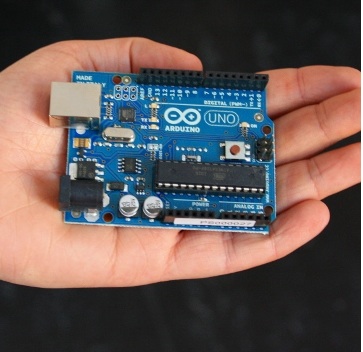Architect magazine has an interesting article and take on “The Technology to Master in Architecture in 2017.”
What They Say
In a piece interviewing nine leaders in digital practice, Wanda Lau, writing for Architect captures notable input from Nicholas Cameron, AIA, of Perkins+Will, Phil Bernstein, FAIA, of Yale and formerly Autodesk, Paul Audsley of NBBJ, and Shane Burger of Woods Bagot, among others.
Perkins+Will’s Cameron makes note of MR (mixed reality), AKA, augmented reality, where digital and actual physical environments merge, noting that the advantage of VR technology is that the “client can physically be in a location.” He notes that Perkins+Will’s 2017 resolution is to train as many people as possible in visual scripting tools like Grasshopper for Rhino and Dynamo Studio.
01 – This polyhedron model is wired-up to an Arduino board. The board has a light which lights up in reaction to tension forces in a wire connecting two joints. Bernstein says Arduion boards can be used to create bespoke digital monitoring devices for buidlings.
Bernstein noted the importance of reality capture technology, using scanning, digital photography and drones to create models of existing conditions. In a nod to Autodesk, he cited Recap 360 for reality capture and Insight 360 for energy evaluation. His own resolutions for 2017 focused on IoT in his own home and learning how to build Arduino-based devices. Architosh just wrote about Arduino devices last week. The goal he says with Arduino is to create bespoke digital monitoring devices for infrastructure in buildings.
NBBJ’s Audlsey cites the importance of firms fully leveraging BIM to transform their business process and the importance of “elevating digital leadership and training in effective project workflows.” He too noted sensor networks (which Arduino boards can participate) and included digitally-enhanced rapid prototyping.
Shane Burger of Woods Bagot is extremely well known and regarded within the algorithmic and computation design communities (like SmartGeometry). He says straight away that architects should learn Rhino, Grasshopper and Grasshopper add-ons—like the Galapagos tool we wrote about earlier today.
MORE: Phil Berstein of Autodesk on the Changing Role of the 21st Century Architect—The Interview (Part 1) and (Part 2)
Burger goes further though. Architects should learn the basics of scripting or programming languages, like “Python or C# (pronounced “C sharp”), so you can automate and enhance your design process.” Interestingly, Burger says “skip AutoCAD and Trimble SketchUp: two-dimensional CAD is at its end-of-life.”
Full Story
Read the full story over at Architect magazine online here.
